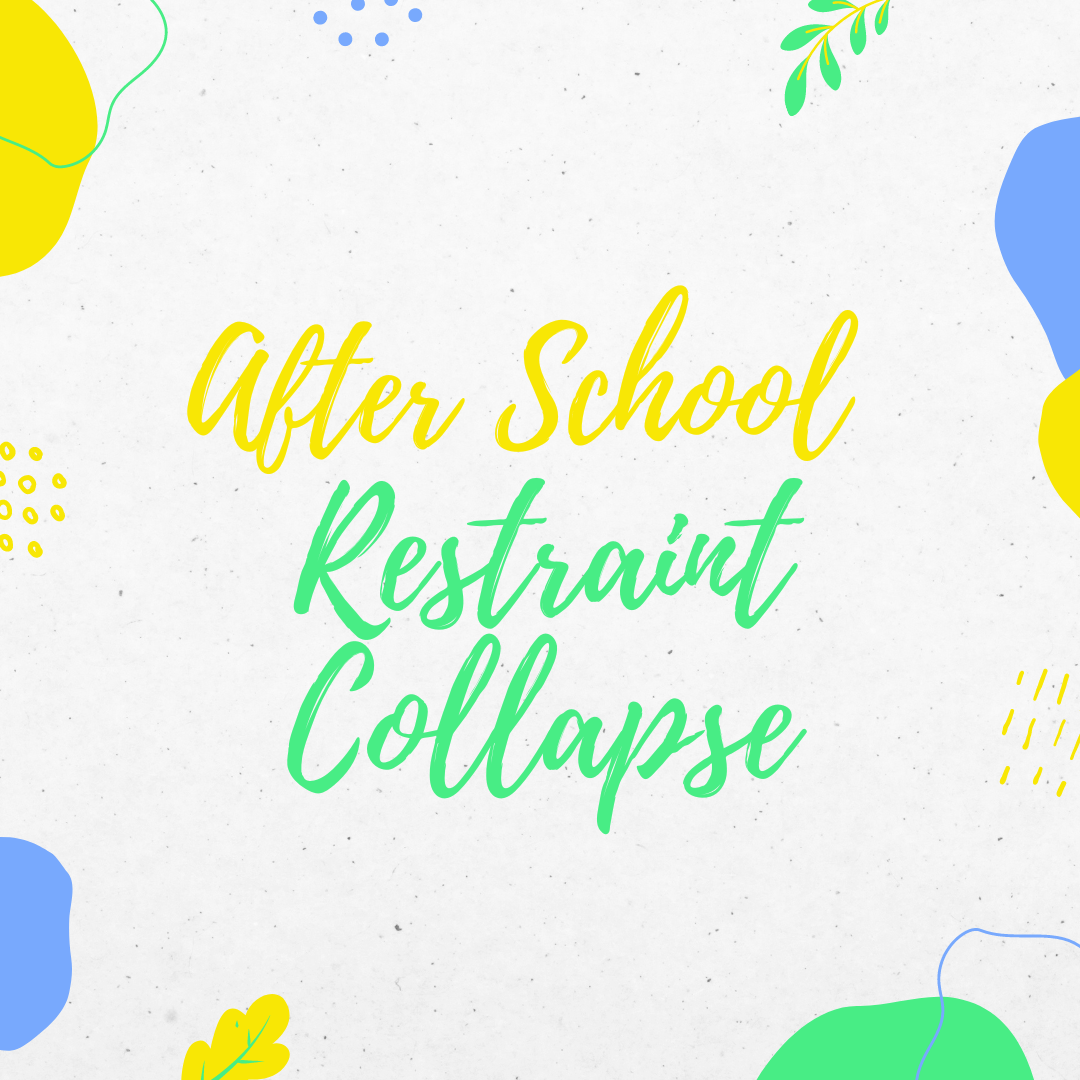
Imagine your child comes home from school, and as soon as they step through the door (or maybe even during the car ride home), they seem to unravel. It’s as if the day’s emotional and physical strain suddenly catches up with them, leading to intense meltdowns or irritability. If this scenario sounds familiar, you might be witnessing what is known as After School Restraint Collapse (ASRC).
In my practice as an occupational therapist, I’ve seen firsthand how challenging this experience can be for both children and their families. After a full day of navigating the structured environment of school, children often reach their limit by the time they get home. This phenomenon, while not formally recognized as a medical condition, has been described by psychotherapist Anthea Nair as a significant emotional and behavioral release that occurs when children are finally in their safe space.
In this blog post, I’ll explain what After School Restraint Collapse is, the signs, as well as some practical strategies to help find some peace in the chaos. Understanding this concept can be the first step in providing your child with the support they need to transition smoothly from school to home.
After School Restraint Collapse describes a phenomenon where children, after a full day of exerting self-control and navigating social and academic demands at school, experience a significant emotional or behavioral breakdown once they arrive home. The term "Restraint Collapse" was coined by Anthea Nair, a psychotherapist, who explains that children and adolescents expend a great deal of energy, mental motivation, emotional containment, and physical restraint while at school. According to Nair (2017), this can result in a sudden and overwhelming release of emotions and built-up energy when they finally return to the safety of their home environment.
After School Restraint Collapse (ASRC) occurs when children, having spent an entire day exerting self-control and dealing with social and academic challenges at school, experience a major emotional or behavioral episode upon arriving home. The concept of "Restraint Collapse" was coined by psychotherapist Anthea Nair, who explains that throughout the school day, children and teenagers invest significant amounts of energy, mental effort, and emotional restraint. Meeting the demands at school can require extensive self-regulation and can culminate in a sudden and intense release of emotions and accumulated stress when kids finally reach the safety and comfort of their home environment. And yes, even if the teachers talk about how well behaved they are or how well they perform in the classroom.
The exact incidence rate of ASRC isn’t precisely documented, but many parents and educators report observing similar patterns in children. It’s an experience that seems particularly common among neurodivergent children like those with high sensitivity, anxiety disorders, and children who may struggle with executive functioning or sensory processing issues. Many parents inform us that teachers often report that their child is fine at school. However, this can sometimes mean that the child is working much harder than their peers—socially, academically, sensory-wise, and emotionally.
An After School Restraint Collapse may look like:
If your child is struggling with ASRC, there are several strategies you can implement to support them:
Less Questions/Demands: When picking up your child, try to minimize questions or demands. Instead, give them space to process their day. Use statements that acknowledge their experience or affirm their feelings like, “I hear that was tough for you” or “That sounds so frustrating”.
Create a Transition Routine: Develop a calming after-school routine that allows your child to unwind. This could include quiet time, a snack, or a calming activity like reading or drawing. Providing a structured transition can help ease the shift from school to home.
Accommodate Sensory Needs: Pay attention to any sensory sensitivities your child may have. If your child is overwhelmed by sensory stimuli, try creating a quiet, sensory-friendly space where they can retreat when needed. Ideas can include a kid’s tent with twinkle lights or a large decorated cardboard box with blankets, pillows, sensory toys, books, snacks, and a sound machine or music if desired.
Satisfy Basic Needs: Plan to have a snack ready for when your child gets out of school. Make sure they have used the restroom recently, and allow for some quiet rest time to either nap to play with favorite items (avoiding overly-stimulating materials).
Co-Regulate with Your Child (If They Are Open to It): If your child is receptive, and you are in a well-regulated state, engage in co-regulation to help them manage their emotions. This can involve calming activities together, such as deep breathing exercises or quiet time. Your presence and support can help them navigate their feelings more effectively.
Facilitate Room for Connection: Play a game together, spend some one on one time away from siblings where they get your undivided attention. Connection can make a huge difference in repair and recovery.
Collaborate with School: Maintain open communication with your child’s teachers and school support staff. They can provide insights into your child’s experiences and emotional state during the day and suggest adjustments or supports that might help manage their stress levels.
If you and your child are experiencing the discomfort of restraint collapse often, addressing school accommodations could be a crucial first step in easing your child's stress. At Bright SpOT, our occupational therapists specialize in collaborating with families to pinpoint and tackle the specific factors contributing to these challenges. We offer tailored strategies designed to meet your child’s individual needs and effectively manage After School Restraint Collapse. If you’re seeking expert guidance and a personalized approach, please reach out to us. We’re here to provide the support and solutions necessary to help your child thrive.
Warm regards,
Caitlin Sanschagrin, OTR
Occupational Therapist
